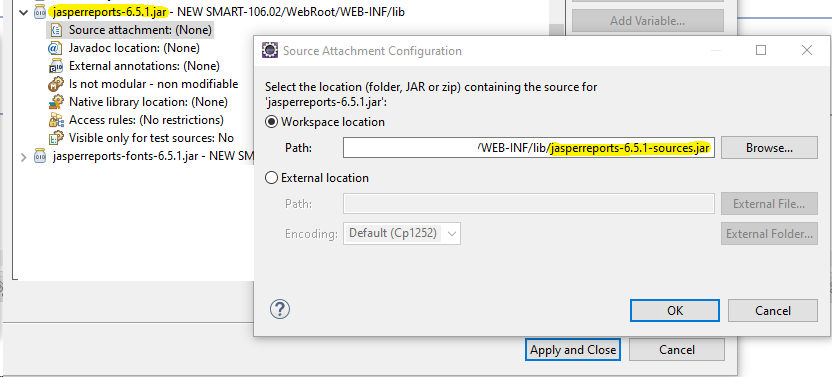I added a Student.jar into my Build Path in my eclipse like this-
Right click on the project->BuildPath->Configure Build Path->Libraries->Add External Jars
There is one class named StudentTest in Student.jar file. When I was debugging my code in eclipse, I stepped into that StudentTest class in the Student.jar.
And after that eclipse shows me like this-
The JAR file
S:\some_location\Student.jarhas no source attachment. You can attach the source by clicking Attach Source below
Now I am not sure how should I attach the source in my eclipse. And from where? Can anyone provide me step by step what I need to do.
Update:-
I tried unzipping the Student.jar and I got Student folder. And after that I tried pointing the source to Student folder But still I am not able to see the class properly so that I can debug it properly, it shows the same above behavior.




Student.jarfolder then point toStudent folder? Or something else. As I tried the above option, and I am still seeing the same behavior. – Vickery